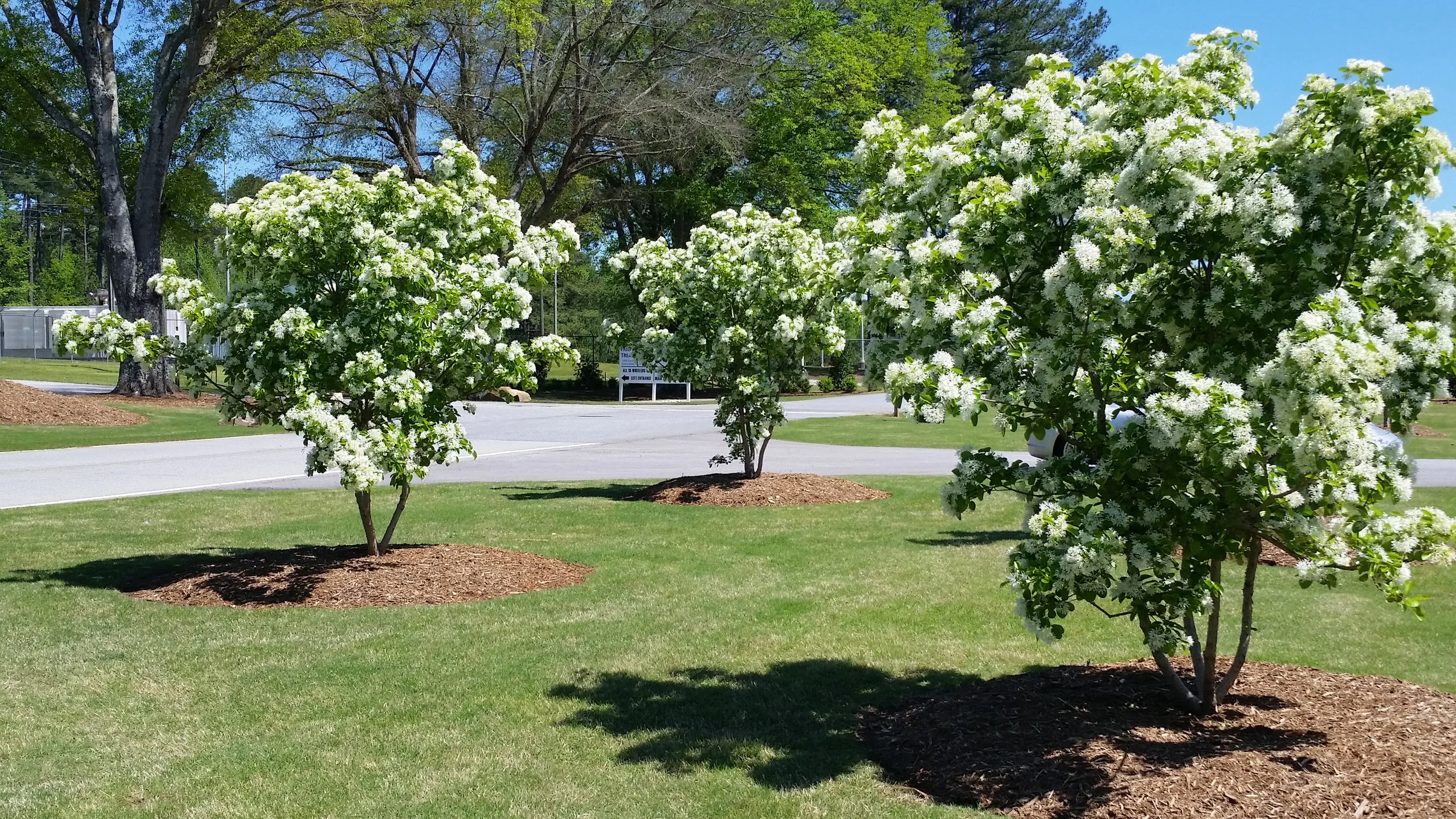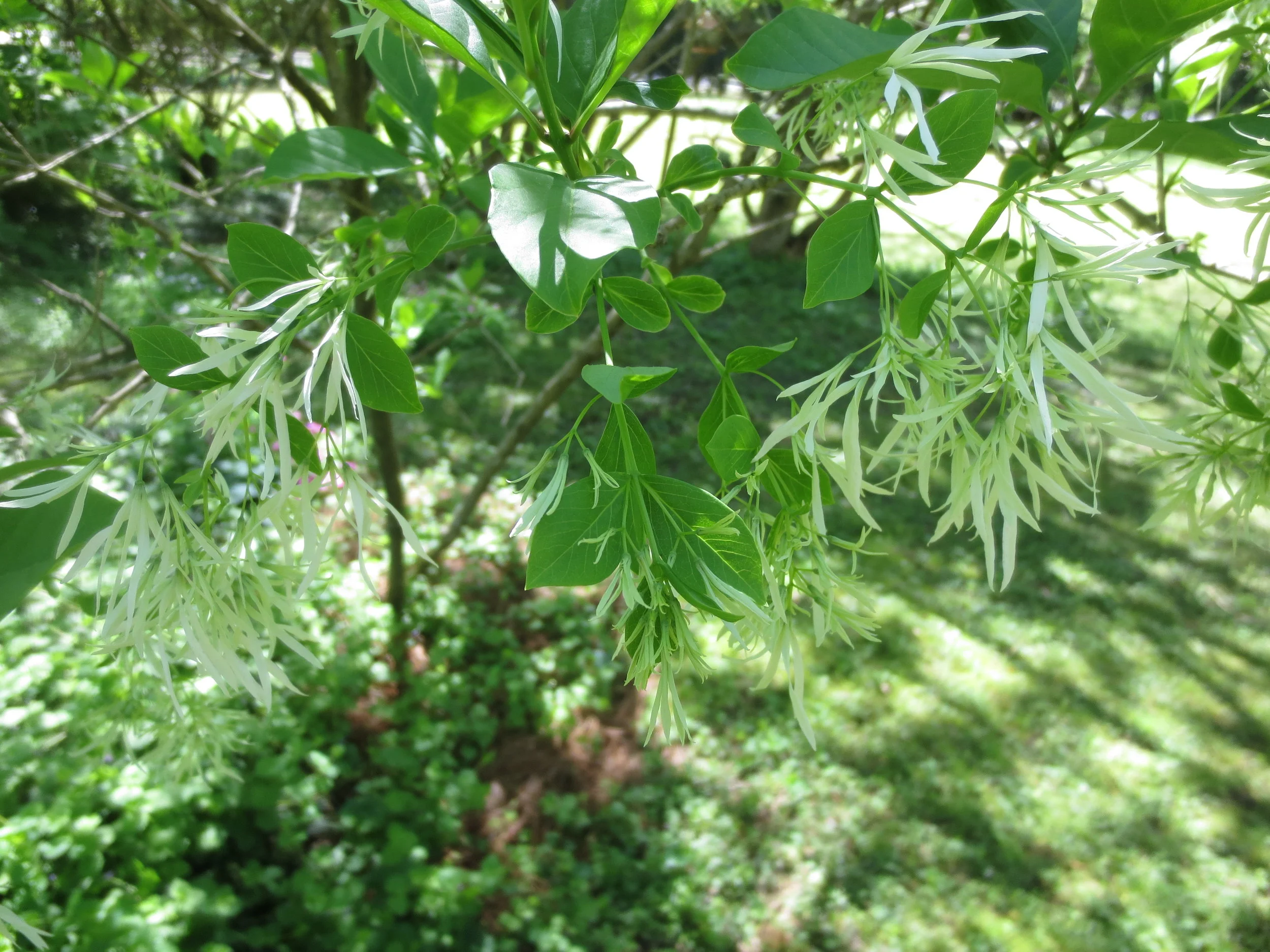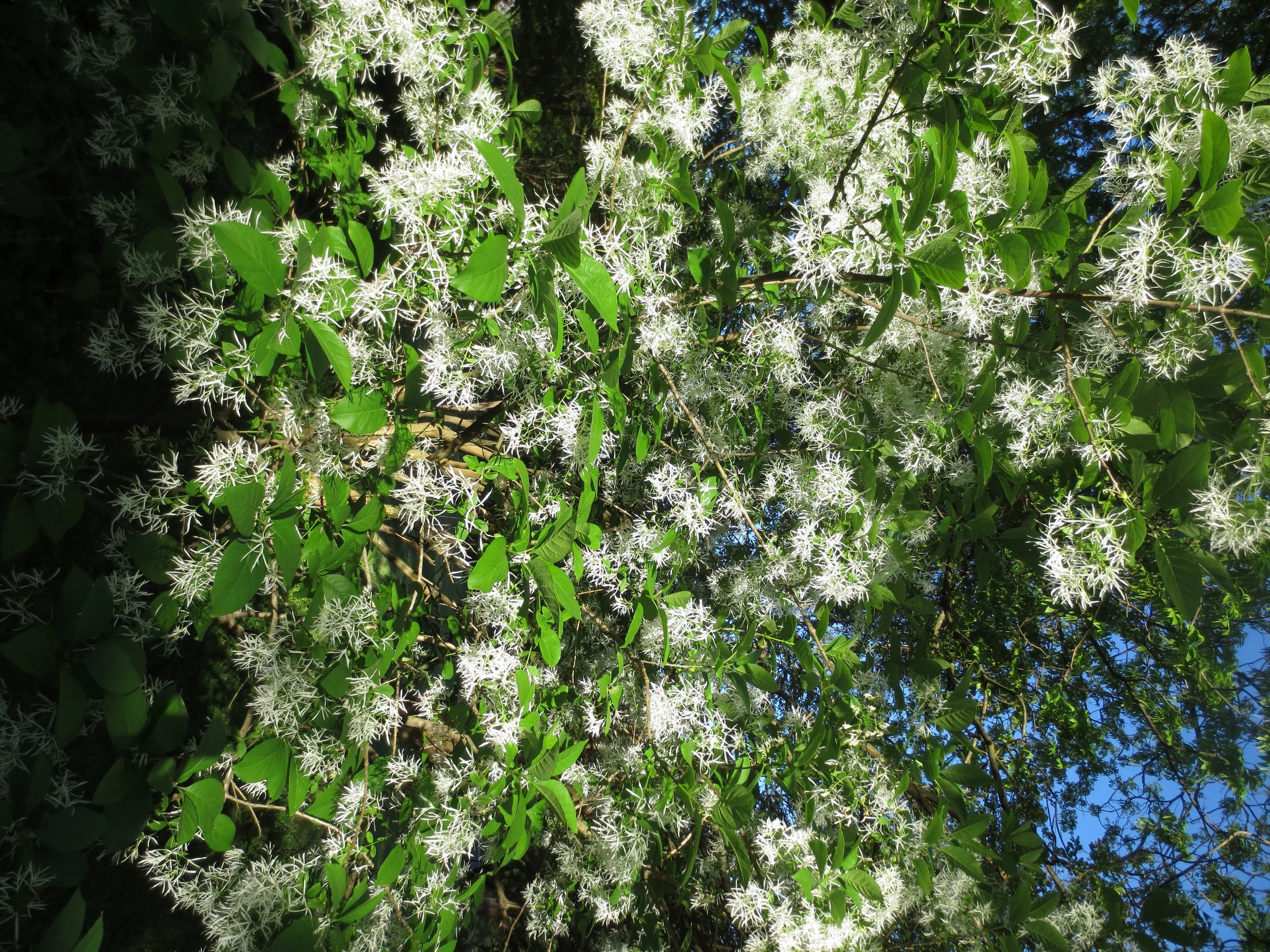Whether you call it Grancy Graybeard, Grandaddy Graybeard or Fringe Tree, Chionanthus (pronounced kye-oh-NANTH-us) is an eye-catching spring bloomer. The southeast hosts two species, Chionanthus virginicus and Chionanthus retusus. Both grow to large shrubs or small trees. The two species can be distinguished by their leaves. Virginicus leaf tapers to a point, in a Vee shape. Retusus is rounded.
The slightly fragrant blooms look like drooping clusters of white fringe. Flowers emerge while leaves are still small. Flowering is heaviest when sited in full sun, but the foliage looks best if it receives light shade during the hottest part of the day. In the Mary Snoddy garden, they bloom just after the lilacs have finished.
Virginicus is native to east Texas. (So why isn’t it texicus intead of virginicus? I don’t know.) Retusus is from China. It grows a bit taller than its sister and its blooms are more numerous. Both prefer an acidic soil but will perform well in a wide pH range. They tolerate drought but look best when grown in moist soil.
Both males and females flower, but only the females produce the drooping bunches of navy blue berries that birds enjoy. Fall color can be variable but is normally unimpressive yellow. The exfoliating bark is pretty in winter. Some trunks may be marked with semi-circular leaf scars, similar to flowering cherry trees. These scars, called lenticels, allow the tree to put off oxygen and intake carbon dioxide. Yes, the bark breathes!
Despite its ease of cultivation, propagation is tough. The seeds have a double dormancy that requires time and patience to germinate. Propagation from cuttings is also difficult and best left to professional growers. The trees transplant best when small. They will grow in zones 3-9. They are native from New Jersey to Florida, and as far west as eastern Texas. Plants need little pruning.
Chionanthus virginicus was named Virginia’s Wildflower of the Year for 1997. Its size means it is perfectly suited for use in smaller home landscape. Its undemanding nature makes it a good choice for new gardeners. It also serves as a larval host and a nectar source for sphinx moths, those giant night-flyers that look like oversized bumblebees or hummingbirds. The only drawback is that deer find them especially tasty.
Chionanthus retusus bloom
A lovely grouping of Chionanthus retusus at a local business.
Chionanthus virginicus grown in partial shade. Note the V-shaped leaves.
Chionanthus virginicus in the Mary Snoddy garden.




